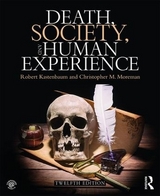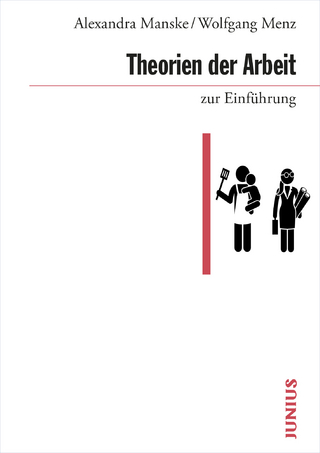
Death, Society and Human Experience
Routledge (Verlag)
978-0-205-00108-8 (ISBN)
- Titel erscheint in neuer Auflage
- Artikel merken
This book is intended to contribute to your understanding of your relationship with death, both as an individual and as a member of society. Kastenbaum shows how individual and societal attitudes influence both how and when we die and how we live and deal with the knowledge of death and loss.
Robert Kastenbaum is a renowned scholar who developed one of the world's first death education courses and introduced the first text for this market.
This landmark text draws on contributions from the social and behavioral sciences as well as the humanities, such as history, religion, philosophy, literature, and the arts, to provide thorough coverage of understanding death and the dying process.
Learning Goals
Upon completing this book, readers should be able to:
Understand the relationship with death, both as an individual and as a member of society
See how social forces and events affect the length of our lives, how we grieve, and how we die
Learn how dying people are perceived and treated in our society and what can be done to provide the best possible care
Master an understanding of continuing developments and challenges to hospice (palliative care).
Understand what is becoming of faith and doubt about an afterlife
Note: MySearchLab does not come automatically packaged with this text. To purchase MySearchLab, please visit: www.mysearchlab.com or you can purchase a ValuePack of the text + MySearchLab with Pearson eText (at no additional cost). ValuePack ISBN-10: 0205863515 / ValuePack ISBN-13: 9780205863518
Bob Kastenbaum’s exploits as skating messenger apparently qualified him to become editor of two community newspapers, an eccentric career trajectory that somehow led to a graduate scholarship in philosophy and a Ph.D. in psychology at the University of Southern California (1959). He was most interested in fields of psychological study that barely existed at the time: lifespan development and aging, time perspective, creativity, and death and dying. Kastenbaum became part of an emerging cadre that overcame the prevailing neglect and resistance to these issues. He worked in varied settings as clinician, researcher, activist, hospital administrator, educator, and author. The innovative programs he introduced into a geriatric hospital and his article, “The Reluctant Therapist” have been credited with preparing the way for increased attention to the needs and potentials of vulnerable elders and terminally ill people. With Dick Kalish, he founded Omega, the first peer-reviewed journal focused on death-related issues. Kastenbaum taught the first regularly-scheduled university course on death and dying and came up with the first textbook (Death, Society, & Human Experience, 1977). He also established the first university-based educational and research center on death and dying (Wayne State University, 1966). His other books include The Psychology of Death (1972, 1990, 2000); Dorian, Graying: Is Youth the Only Thing Worth Having? (1995), and On Our Way. The Final Passage Through Life and Death (2004). He has also served as editor of the Macmillan Encyclopedia of Death and Dying, (2003) and two previous encyclopedias. In the public sphere he has served as a co-founder of The National Caucus on Black Aging, consultant to the United States Senate Special Subcommittee on Aging, and participant in developing the Veterans Administration’s geriatric research and educational centers, and the landmark National Hospice Demonstration Project. Kastenbaum lives in Tempe, Arizona with Bunny (wife), Angel (The Incredible Leaping Dog), enhanced by Pumpkin and Snowflake in the cat department. Along with his continuing research interests, Kastenbaum has been writing book and verse for musicals and operas. He notes that nobody has died in the two most recently premiered operas (Closing Time; American Gothic, music by Kenneth LaFave), but cannot make any such promises about the next opera.
IN THIS SECTION:
1. BRIEF
2. COMPREHENSIVE
BRIEF TABLE OF CONTENTS:
Chapter 1: As We Think About Death
Chapter 2: What is Death?
Chapter 3: Dying
Chapter 4: End-of-Life Issues and Decisions
Chapter 5: Suicide
Chapter 6: Violent Death: Murder, Terrorism, Genocide, Disaster, and Accident
Chapter 7: Euthanasia, Assisted Death, Abortion, and the Right to Die
COMPREHENSIVE TABLE OF CONTENTS:
Chapter 1: As We Think About Death
A History of Death?
Not Thinking About Death: A Failed Experiment
Your Self-Inventory of Attitudes, Beliefs, and Feelings
Some Answers – And The Questions They Raise
Man is Mortal: But What Does That Have To DO With Me?
Anxiety, Denial, and Acceptance: Three Core Concepts
Studies and Theories of Death Anxiety
Major Findings From Self-Reports of Death Anxiety
Theoretical Perspectives on Death Anxiety
Accepting and Denying Death
Chapter 2: What is Death?
Ideas About The Nature And Meaning Of Death
Death As Observed, Proclaimed, And Imagined
Biomedical Approaches To The Definition Of Death
Event Versus State
What Does Death Mean?
Interpretations Of The Death State
Conditions That Resemble Death
Death As A Person
Conditions That Death Resembles
The Undead
Death As An Agent Of Personal, Political, And Social
Chapter 3: Dying
The Moment Of Death: Is It Vanishing?
What Is Dying, And When Does It Begin?
Trajectories Of Dying: From Beginning To End
Guarded Feelings, Subtle Communications
Individuality And Universality In The Experience Of Dying
Theoretical Models Of The Dying Process
Chapter 4: End-of-Life Issues and Decisions
From Description To Decision Making
Who Should Participate In End-Of-Life Decisions?
The Living Will And Its Impact
Right-To-Die Decisions That We Can Make
A Right Not To Die? The Cryonics Alternative
Organ Donation
Funeral-Related Decisions
Chapter 5: Suicide
What Do The Statistics Tell Us?
Four Problem Areas
Some Cultural Meanings Of Suicide
A Powerful Sociological Theory Of Suicide
Some Individual Meanings Of Suicide
Facts And Myths About Suicide
Suicide Prevention
Emerging Issues And Challenges
Chapter 6: Violent Death: Murder, Terrorism, Genocide, Disaster, and Accident
Murder
Terrorism
9/11/01 And Its Consequences
Accident And Disaster
Chapter 7: Euthanasia, Assisted Death, Abortion, and the Right to Die
“I Swear By Appollo The Physician”: What Happened To The Hippocratic Oath?
Key Terms And Concepts
Our Changing Attitudes Toward A Right To Die
The Right-To-Die Dilemma: Case Examples
| Erscheint lt. Verlag | 6.12.2011 |
|---|---|
| Verlagsort | New York |
| Sprache | englisch |
| Maße | 230 x 188 mm |
| Gewicht | 700 g |
| Themenwelt | Sozialwissenschaften ► Soziologie ► Mikrosoziologie |
| ISBN-10 | 0-205-00108-4 / 0205001084 |
| ISBN-13 | 978-0-205-00108-8 / 9780205001088 |
| Zustand | Neuware |
| Informationen gemäß Produktsicherheitsverordnung (GPSR) | |
| Haben Sie eine Frage zum Produkt? |
aus dem Bereich



